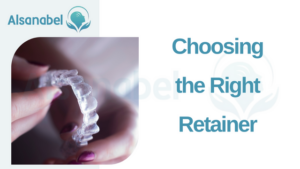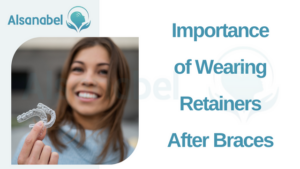Dental Retainers
After getting your braces off, the journey to a perfect smile isn’t over just yet. Dental retainers play an important role in maintaining the alignment and position of your teeth. They are custom-made appliances that are designed to fit your mouth and hold your teeth in place after orthodontic treatment. In this article, we will explore what dental retainers are and why they are needed, as well as the benefits they provide.
What are Dental Retainers and Why are They Needed?
Dental retainers are devices made of wire and/or plastic that are specifically molded to fit the shape of your teeth and gums. They are usually made for either the upper or lower jaw, or sometimes both. The primary purpose of retainers is to prevent your teeth from shifting back to their original positions after braces have been removed.
After orthodontic treatment, your teeth have a tendency to move back to their pre-treatment positions due to the natural forces exerted by your lips, cheeks, and tongue. This movement, known as orthodontic relapse, can undo all the progress made during the braces treatment. Dental retainers hold your teeth in their new positions, allowing the surrounding tissues to adjust and stabilize.
Benefits of Using Dental Retainers
Using dental retainers after braces offer several benefits, including:
- Maintain Teeth Alignment: Retainers help to maintain the alignment and spacing of your teeth, preserving the results achieved through orthodontic treatment.
- Prevent Tooth Shifting: By wearing retainers as recommended by your orthodontist, you can minimize the risk of your teeth shifting back to their original positions over time.
- Support Jawbone Development: Retainers provide support to the developing jawbone by keeping the teeth in their proper positions, helping to ensure proper growth and development.
- Improve Oral Health: Properly aligned teeth are easier to clean, reducing the risk of cavities, gum disease, and other oral health issues.
- Enhance Comfort: Wearing retainers can help to alleviate discomfort during the adjustment period after braces are removed, as they provide stability and support to the teeth and surrounding structures.
In conclusion, dental retainers are essential in maintaining the results of orthodontic treatment. By wearing retainers as prescribed by your orthodontist, you can enjoy the long-term benefits of a beautifully aligned smile.
Types of Removable Retainers

Hawley Retainers: Design and Adjustment
One of the most commonly used removable retainers is the Hawley retainer. It consists of a combination of acrylic and a thin wire that holds the teeth in place. The acrylic portion covers the roof of the mouth or the tongue side of the lower teeth, while the wire is custom-made to fit around the front teeth. This retainer is adjustable, allowing for minor changes to be made as needed.
Hawley retainers offer several benefits. Firstly, they are durable and resistant to wear and tear. They can also be personalized with various color options and designs, adding a touch of individuality. Another advantage is that adjustments can be made to accommodate any minor shifting that may occur, ensuring that the teeth remain properly aligned over time.
Essix Retainers: Clear and Discreet Option
For those who prefer a more discreet option, Essix retainers are an excellent choice. These transparent retainers are made from a thin, clear plastic material that fits snugly over the teeth. They are virtually invisible, making them an ideal choice for individuals who do not want their retainer to be noticeable.
Essix retainers offer several advantages. Firstly, they are comfortable to wear, as they do not have any metal wires or clasps. They also provide a full view of the teeth, allowing for easy oral hygiene maintenance. Additionally, these retainers are removable, making eating and brushing convenient.
It is important to note that Essix retainers are not as durable as Hawley retainers and may need to be replaced more frequently. They are also not adjustable, so any significant shifting of the teeth may require a new retainer to be made.
In conclusion, there are different types of removable retainers available after braces treatment. Hawley retainers offer durability and the option for adjustment, while Essix retainers provide a clear and discreet alternative. Consult with your orthodontist to determine which type of retainer is best suited for your specific needs and maintain the beautiful results achieved through orthodontic treatment.
The Top Natural Antibiotics for Tooth Infections 2023
Types of Fixed Retainers
Fixed retainers are an essential part of maintaining the results achieved through orthodontic treatment after braces. They are attached to the teeth and provide continuous support to ensure proper alignment. Here, we will discuss two common types of fixed retainers: bonded lingual retainers and bonded retainers with clasps.
Bonded Lingual Retainers: Permanent and Hidden
Bonded lingual retainers are thin wires that are custom-made to fit along the back surfaces of the teeth, usually on the lower front teeth. They are bonded or glued onto the teeth using dental adhesive. What sets them apart is that they are hidden from view, making them an ideal choice for those who want a more discreet option.
These retainers offer several advantages. Firstly, they are permanent, which means they provide continuous support to keep the teeth aligned without the need for regular removal. Secondly, because they are bonded to the teeth, there is no risk of misplacing or forgetting to wear them. Lastly, they are barely noticeable, allowing individuals to maintain their confidence in their smiles.
Bonded Retainers with Clasps: Added Stability and Adjustability
Bonded retainers with clasps are similar to bonded lingual retainers, but they also feature small metal clasps that wrap around the back of the teeth for added stability. These clasps can be adjusted by the orthodontist to accommodate any minor changes in tooth alignment that may occur over time.
These retainers offer the advantage of both stability and adjustability. The clasps provide extra support to keep the teeth in place, while the ability to make adjustments ensures that any shifting can be addressed promptly. However, it is important to note that these retainers are more visible compared to bonded lingual retainers, as the metal clasps may be slightly visible when smiling or talking.
In conclusion, fixed retainers are an excellent option for maintaining the straightened teeth after braces treatment. Bonded lingual retainers are a permanent and hidden solution, while bonded retainers with clasps offer added stability and adjustability. Consult with your orthodontist to determine which type of fixed retainer is best suited for your specific needs and enjoy the benefits of a beautifully aligned smile for years to come.
Choosing the Right Retainer

Factors to consider when choosing a retainer
When it comes to maintaining the results achieved through orthodontic treatment after braces, choosing the right retainer is crucial. Different types of retainers offer various benefits and considerations. Here are some factors to consider when selecting a retainer:
- Visibility: If having a discreet option is important to you, bonded lingual retainers might be the ideal choice. These retainers are hidden from view as they are attached to the back surfaces of the teeth. On the other hand, bonded retainers with clasps are more visible due to the metal clasps that wrap around the teeth.
- Comfort: Comfort is essential when wearing a retainer for an extended period. Bonded lingual retainers are generally more comfortable as they sit behind the teeth, making them less intrusive. However, some individuals may find the wire slightly irritating at first, but it usually becomes unnoticeable over time.
- Maintenance: Consider the level of maintenance required for each type of retainer. Bonded lingual retainers are permanent, meaning you don’t have to worry about taking them in and out. They provide continuous support without the risk of misplacing or forgetting to wear them. Bonded retainers with clasps, on the other hand, may require adjustments by the orthodontist to accommodate any minor changes in tooth alignment.
Importance of consulting with your orthodontist
It is crucial to consult with your orthodontist before selecting a retainer. They have the expertise and knowledge to assess your specific needs and recommend the most suitable option for you. The orthodontist will consider factors such as your treatment history, dental health, lifestyle, and personal preferences to ensure you make an informed decision.
Additionally, an orthodontist can provide guidance on how to properly care for and maintain your retainer, including cleaning instructions and follow-up appointments.
Remember, the goal of wearing a retainer is to maintain the straightened teeth achieved through braces. By consulting with your orthodontist and choosing the right retainer, you can ensure the long-term success of your orthodontic treatment and enjoy a beautifully aligned smile for years to come.
Tips for Caring for Dental Retainers
Proper Cleaning and Maintenance of Retainers
Taking proper care of your dental retainers is essential to ensure their effectiveness and longevity. Here are some tips for cleaning and maintaining your retainers:
- Regular Cleaning: Clean your retainers daily to remove bacteria and prevent odors. Use a soft toothbrush and mild, non-abrasive toothpaste to gently scrub the retainers. Rinse them thoroughly with water before placing them back in your mouth.
- Avoid Harsh Chemicals: Avoid using harsh chemicals, such as mouthwash or denture cleaning solutions, as they can damage the retainers. Stick to simple cleaning methods to maintain their integrity.
- Store Properly: When not in use, store your retainers in a clean case to protect them from dirt and damage. Avoid placing them in tissues or napkins, as they can easily be misplaced or accidentally thrown away.
- Avoid Heat: Retainers should not be exposed to high temperatures, as it can cause them to warp or lose their shape. Keep them away from hot water, hot surfaces, or direct sunlight.
- Regular Check-ups: Visit your orthodontist regularly for check-ups and adjustments. They can inspect the retainers for any signs of wear or damage and make necessary adjustments to ensure optimal fit and effectiveness.
What to Do If Your Retainer Gets Damaged
If your retainer gets damaged or broken, it is important to take immediate action. Here’s what you should do:
- Contact your Orthodontist: Reach out to your orthodontist as soon as possible to inform them about the damage. They will guide you on the next steps and schedule an appointment for repairs or replacement.
- Do Not Attempt Self-Repairs: Avoid trying to fix the retainer yourself, as it may cause further damage or render it ineffective. Let the professionals handle the repairs to ensure proper function and fit.
- Temporary Solutions: If you cannot see your orthodontist immediately, you can use orthodontic wax to cover any sharp edges or discomfort caused by the damaged retainer. This will provide temporary relief until you can get it repaired or replaced.
By following these tips and taking proper care of your dental retainers, you can maintain their effectiveness and enjoy a healthy, aligned smile for years to come. Remember to consult with your orthodontist for personalized advice and guidance on caring for your specific type of retainer.
Importance of Wearing Retainers After Braces
Wearing retainers after braces is crucial because:

- Stabilizes Teeth: Retainers help hold your teeth in their new positions, preventing them from shifting back to their original alignment.
- Allows the Jawbone to Settle: It takes time for the jawbone to adapt to the new tooth positions. Wearing retainers allows the jawbone to settle, ensuring long-lasting results.
- Ensures Bite Alignment: Retainers help maintain proper bite alignment, ensuring that your upper and lower teeth fit together correctly.
- Protects Investment in Orthodontic Treatment: Wearing retainers protects the investment you made in orthodontic treatment by preserving the results achieved.
By understanding the different types of dental retainers and the importance of wearing them after braces, you can ensure the longevity and effectiveness of your orthodontic treatment. Remember to consult with your orthodontist for personalized advice on which type of retainer is best suited for your specific needs.
Summary of Different Types of Dental Retainers
After braces, wearing dental retainers is essential to maintain the alignment of your teeth. There are different types of dental retainers available, including:
- Hawley Retainers: These retainers consist of a plastic body that is custom-made to fit the roof of your mouth and a wire that goes across the front of your teeth. They are adjustable and provide excellent retention.
- Clear Retainers: These retainers are made from a clear plastic material and are custom-made to fit over your teeth snugly. They are virtually invisible and easy to wear.
- Fixed Retainers: Also known as bonded retainers, these are thin wires that are glued to the back of your teeth. They provide permanent retention and require minimal maintenance.
